An elderly man with a black fedora sits in the front seat upstairs on a bus in Dublin sometime during the 1980s. You can see where he has tried to clear the fogged-up window in front of him to get a view. But it has smeared up again. We know without seeing it that it is grim outside. It is also grim enough inside. Nonetheless, the man peers stoically into the misted window.
Young children play in Cumberland Street after the weekend market. The street is strewn with piles of rubbish and discarded items. Unsold armchairs and sofas have been set alight on the pavement and now burn in a large pyre with billowing black smoke. People pass by ignoring it. A woman balances a box marked Pifco on a rickety pram on her way home.
At the annual Christmas turkey market near Smithfield, dozens of turkeys hang neatly from the outside railings of a block of flats. It is such an arresting and unusual sight, but local people pass as if it’s mundane, no different from a row of shirts hanging on a shop rail.
The phrase “street photographer” is one that comes closest to describing Tony O’Shea, the Kerry-born photographer whose body of work is subject to a major retrospective exhibition in Photo Museum Ireland.
READ MORE
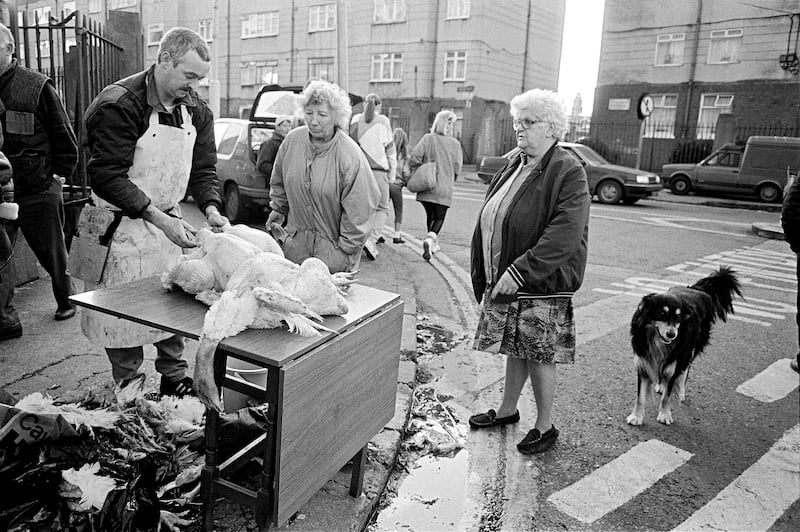
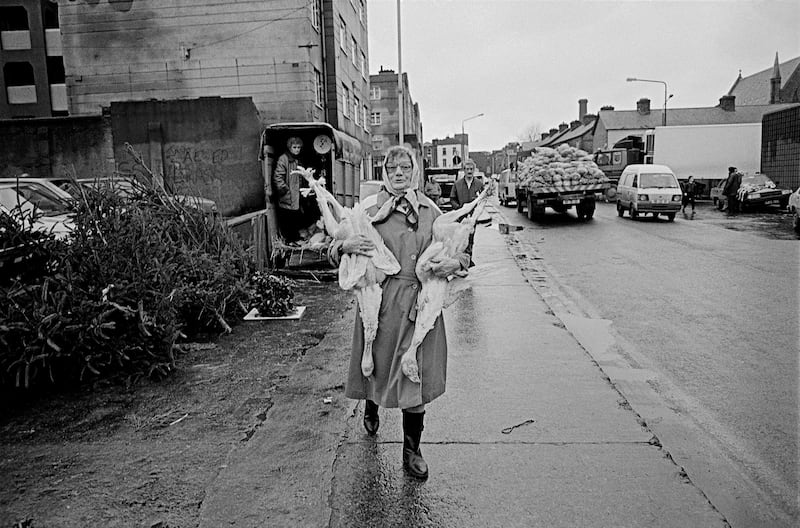
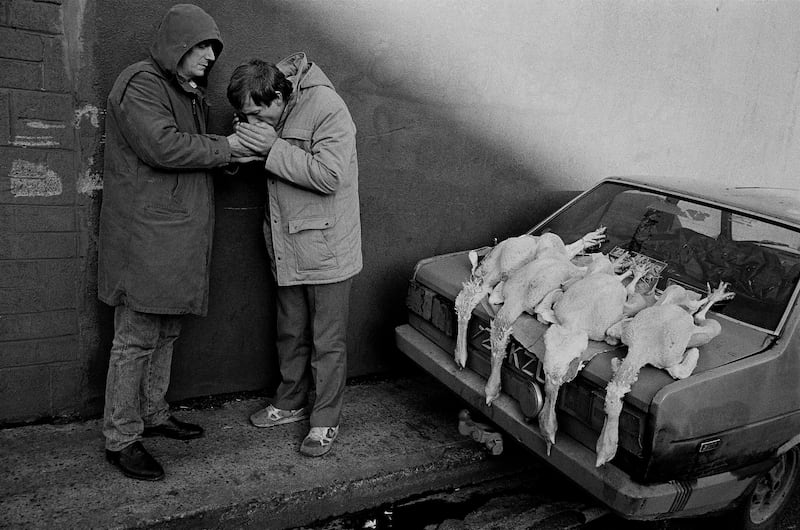
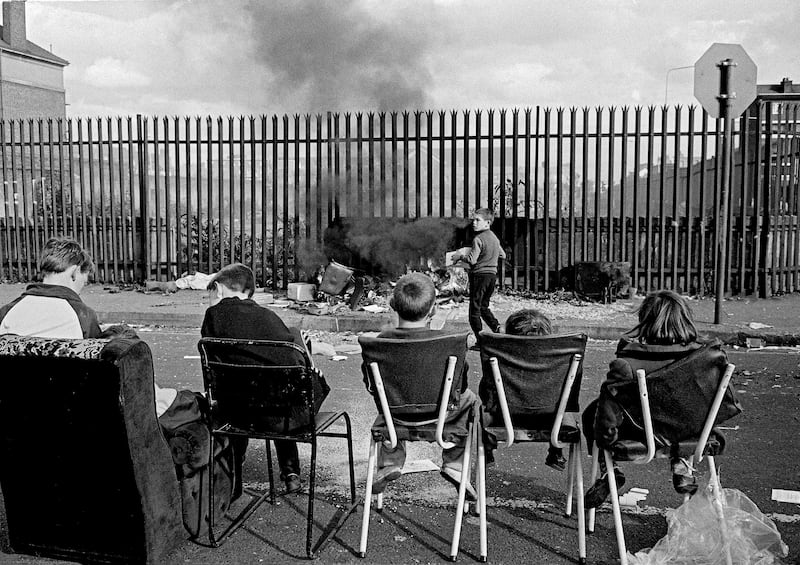
O’Shea is an unassuming man and his style of photography is unobtrusive. He is a documentary photographer capturing moments of ordinary life as they happen. The photographs are not posed. They are all shot in black-and-white. They focus on people at the periphery of society: the urban poor, travellers, working class youth culture. He returns again and again to similar themes and places: urban markets, inner city poverty, people travelling on urban buses, Catholic rites, republican marches, youth culture. The work is campaigning. There is little action. For example, much of his work on the Troubles looks at ritual: grassroots people during moments of repose at republican marches, or rural Orangemen sitting in a country bar after a Twelfth of July march.
Often the drama is in the juxtaposition of subjects. Two boys lean against an ugly pebble-dashed well in a corporation estate, feet away from an exquisite May altar. A be-hatted priest sits rigidly on a bus seat while a young child sleeps stretched across the street in front, his fair hair catching a beam of sunshine. A bare-chested Traveller, with his fists in boxing stance, stands over his supine opponent lying on the road outside the Werburgh Street welfare office. Yards away, a garda looks away indifferently.
And sometimes, the photographs are just beautiful in an unvarnished and stark way. A boy sits on a bus holding a sparrow hawk in his gloved hand as if it is the most natural thing in the world.
O’Shea, in terms of his aesthetic, is the closest Ireland has had to a Henri Cartier-Bresson, says Irish Times photographer and videographer Bryan O’Brien. The Magnum photographer Josef Koudelka was also a big influence.
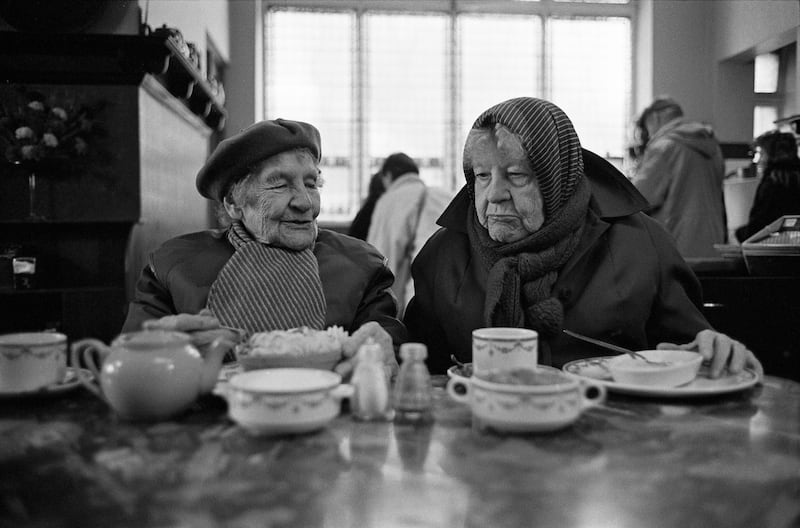
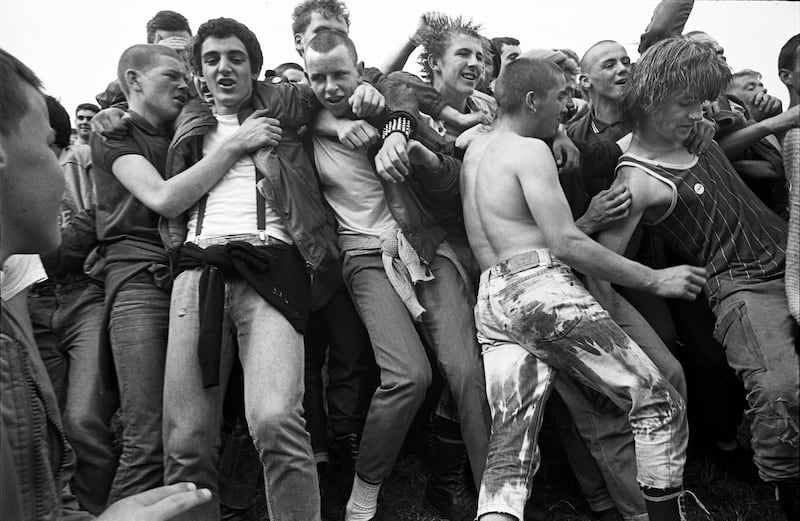
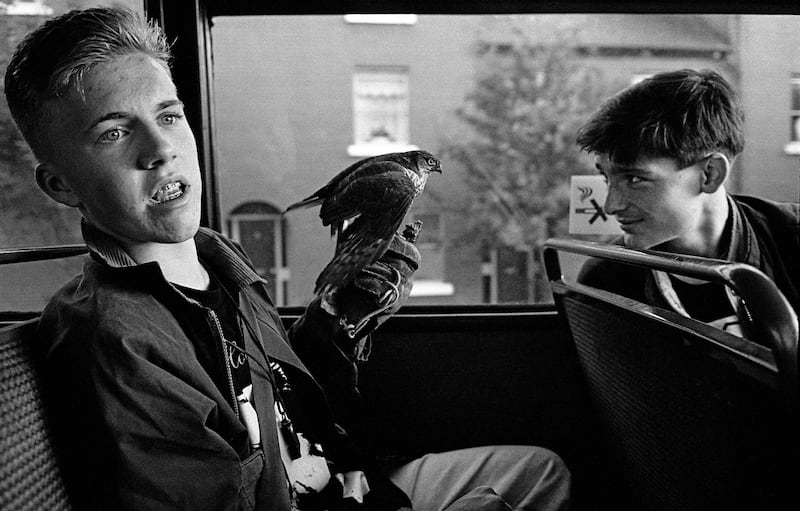
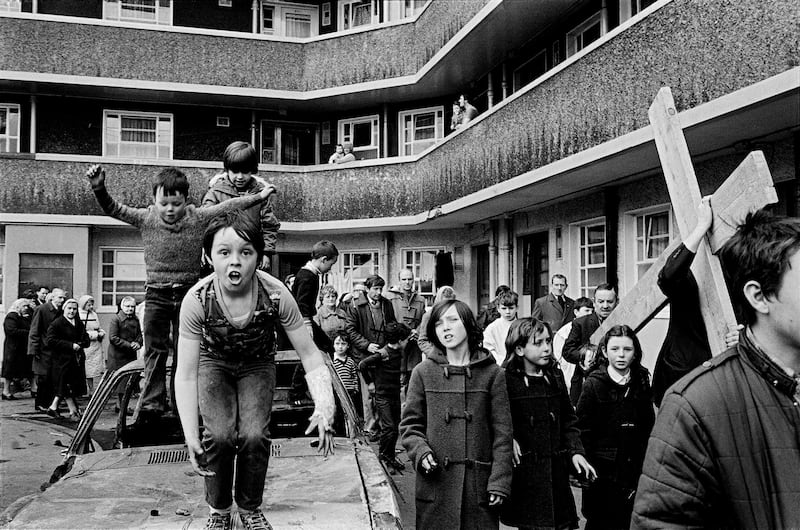
Given that Dublin street life has comprised so much of his work, it is a surprise to find that O’Shea was brought up on Valentia Island in Co Kerry. Going to school in Caherciveen involved 18 miles of cycling and two ferry rides each day. It was not until he finished his degree in English and Philosophy at University College Dublin, and had worked on sites in London, that his interest in photography deepened. He travelled the world in the 1970s and ended up teaching English in Japan. It opened his eyes to different types of photography and perspectives.
When he returned to Ireland, the publisher of In Dublin magazine, John S Doyle, gave him work. In Dublin at the time was pioneering photography that was unposed and documented life as it happened. Two exceptional visual documentarists, Tony Murray and Tom Grace, worked for In Dublin at the time. O’Shea was strongly influenced by them.
His interest in photographing people on buses came from a suggestion by Colm Tóibín, with whom he often collaborated. “Colm had this notion of doing something on what it felt like for people to travel by bus.”
And that became O’Shea’s modus operandi: to capture what it was like for people in their different lives, often in deprived areas.

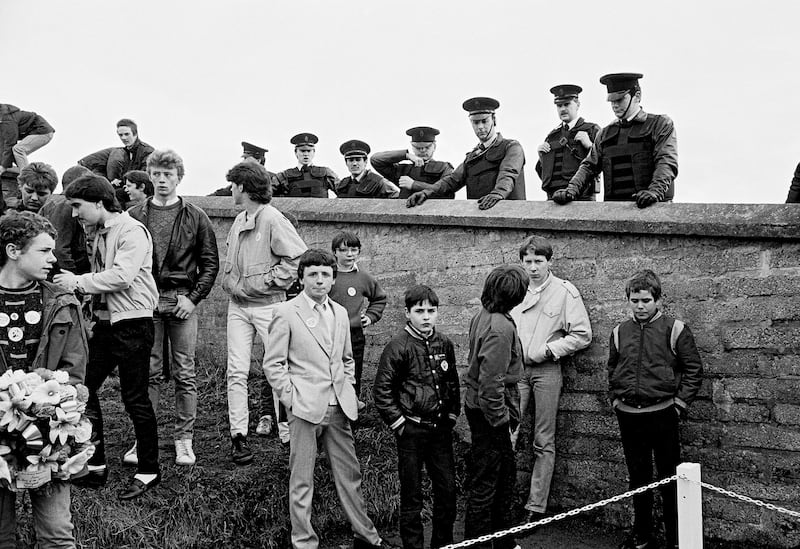
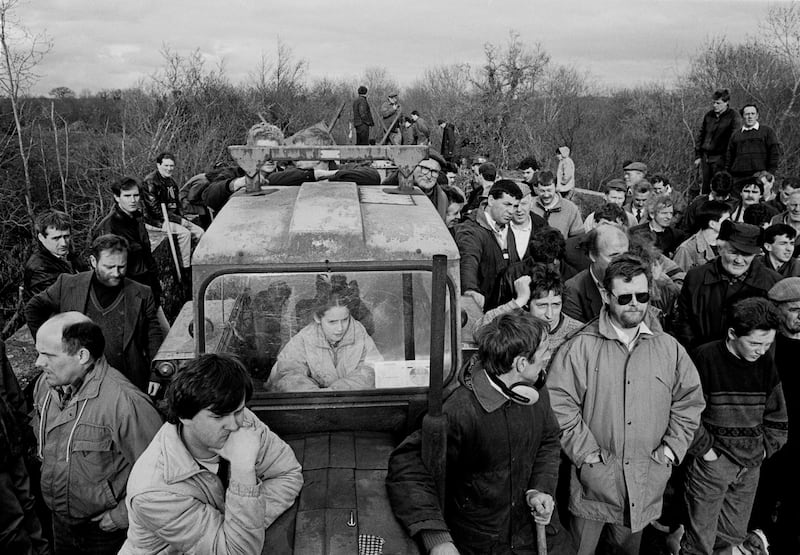
“It was not just about poverty. These people were survivors despite the deprivation and lack of money and conditions they lived in. They survived and got through life, with gusto,” he says.
“There are layers of meaning and interpretation. When you photograph human beings, it’s just not evidence or a record. There are certain things you can feel when looking at an image. You strive for images that have a resonance.”
His native Kerry has not been neglected. He has a fine body of work of rowing competitions on his native island, as well as of dogs (and humans) following the scent in the south Kerry pastime of drag hunting on foot (a big passion of his).
Dan Scully in Photo Museum Ireland has undertaken a substantial project digitising O’Shea’s work for posterity, as part of a wider task to ensure the work of important Irish photographers is preserved.
The Light of Day retrospective exhibition of Tony O’Shea’s work is curated by Trish Lambe, and runs until February 18th, 2023. Tony O’Shea will be signing copies of his book on December 17th. photomuseumireland.ie



















